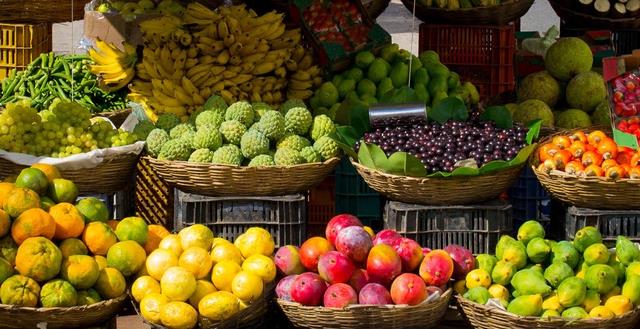As winter comes to an end and temperatures begin to rise, shippers are gearing up for one of the busiest times of the year—produce shipping season. The rise in produce shipping this time of year creates several challenges for shippers throughout the U.S. due to an imbalance in supply and demand. Whether you ship fruits and veggies, or other commodities, you can expect to see tightened capacity and increased costs over the next few months.
What is Produce Season?
Produce season in the U.S. typically begins in March and continues until July. It can be defined as the time period in which the largest volume of fruits and vegetables are harvested and shipped to food manufacturers, grocery stores, and other vendors across the country. Growing and harvesting begins in the Southeastern states, Southern Texas and the Rio Grande Valley, and Southern California, and continues to move north as temperatures rise. Shipping rates in these southern regions typically experience the largest spike during produce season, as the demand of trucks—especially temperature controlled trucks—is high while supply of them is minimal. This not only affects produce and nut shippers; the entire supply chain feels the effects of tightened capacity, increased costs, and scheduling constraints.
 Poorer growing conditions in California and Florida have resulted in slightly lower than normal production levels this year. As a result, we’ve seen an influx of fruit and vegetables from Mexico and South America. What does that mean for capacity? While we still expect to see a capacity crunch in produce-growing states this spring, there may also be a boom in truck demand near the borders and ports (DAT Solutions).
Poorer growing conditions in California and Florida have resulted in slightly lower than normal production levels this year. As a result, we’ve seen an influx of fruit and vegetables from Mexico and South America. What does that mean for capacity? While we still expect to see a capacity crunch in produce-growing states this spring, there may also be a boom in truck demand near the borders and ports (DAT Solutions).
Keep Costs Down & Find the Best Trucks
Below are 3 tips to help shippers get through the busy produce season secure more capacity, and control costs.
1. Position Yourself as a Shipper of Choice. When capacity is tight, the imbalance of supply and demand often forces shippers to select the option that gets the job done, even if it comes at a higher price. To keep costs down, it’s important for shippers to make themselves attractive to carriers. For example, a shipper can offer ways to maximize driving time, allow for flexible shipping hours, or emphasize driver-friendly facilities. Positioning yourself as easy to do business with will lead to better prices and more reliable coverage from your carriers. Check out the below blog posts for more steps you can take to become a shipper of choice:
- 6 Steps Shippers Can Take to Attract Carriers and Secure Capacity
- 6 More Ways to Become a Shipper of Choice during a Capacity Crunch
2. Focus on Relationships. Shippers should focus on building relationships with their service providers that result in lower costs over time, rather than constantly searching for the cheapest options in the short term—which often comes from less reliable providers. In the long-run, there can be more value in working with 3PLs who have strong partnerships with their network and can provide consistently reliable coverage. Shippers should look beyond the price of the transaction and ask themselves, “What is the total cost of my shipment?”
 3. Consider Dedicated Solutions. Shippers looking for more control over their freight rates—especially on their regular moves—would be wise to consider dedicated solutions. Agreeing to a fixed price for a consistent service or capacity commitment reduces the risks, costs, time, and headaches associated with supply chain disruptions or failures. Doing so can also help shippers forecast costs more accurately and develop a more efficient carrier network.
3. Consider Dedicated Solutions. Shippers looking for more control over their freight rates—especially on their regular moves—would be wise to consider dedicated solutions. Agreeing to a fixed price for a consistent service or capacity commitment reduces the risks, costs, time, and headaches associated with supply chain disruptions or failures. Doing so can also help shippers forecast costs more accurately and develop a more efficient carrier network.
We understand the pressure of shipping during seasonal spikes and that April through July can be challenging. As a 3-time Food Logistics Top 100 3PL, we are a proven carrier, committed to keeping you and your customers happy by eliminating any potential disruptions to your supply chain.

